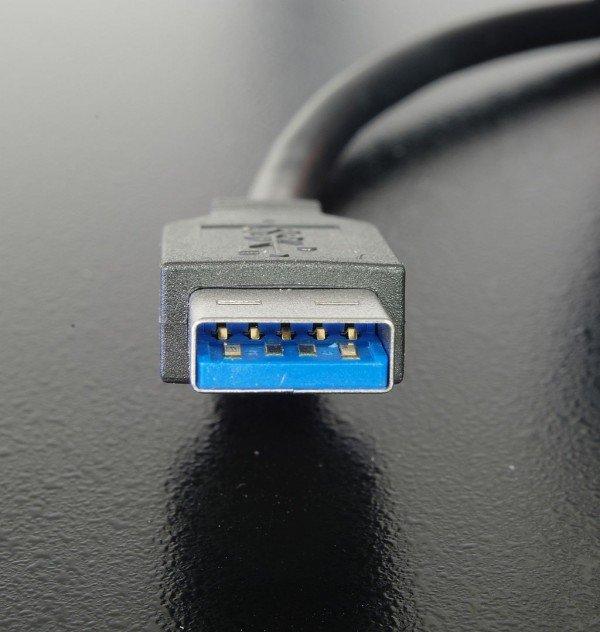USB 3.0—Everything you need to know
In the last 14 years, the Universal Serial Bus (USB) has become the standard interface to connect devices to a computer. Whether it’s an external hard drive, a camera, the mouse, a printer, or a scanner, the physical connection to transfer data between devices generally is a USB cable. The interface is indeed universal.

USB 3.0 is the third major version of the Universal Serial Bus (USB) standard for computer connectivity. Among other improvements, USB 3.0 adds a new transfer mode called “SuperSpeed” (SS), capable of transferring data at up to 5 Gbits/s (625 MB/s), which is more than ten times as fast as the 480 Mbit/s (60 MB/s) high speed of USB 2.0. Beside different connectors used on USB 3.0 cables, they are also distinguishable from their 2.0 counterparts by either the blue color of the ports or the SS initials on the plugs.
A successor standard named USB 3.1 was released in July 2013, providing transfer rates up to 10 Gbits/s (1.25 GB/s, called “SuperSpeed+”), which effectively put it on par with the first version of Thunderbolt.
USB 3.0 Specifications A number of changes have been implemented in USB 3.0 to satisfy the increased demands of external devices. Here is a quick overview of USB technology:
Transfer Rate
This new Super Speed interface provides realistic transfer rates of around 3,200 Mbits/s or 3.2 Gbits/s. The theoretical top signaling rate is 4.8 Gbits/s.
Data Transfer
USB 3.0 introduces full duplex data transfer. Two of five lanes are reserved for transmitting data, while another pair is dedicated to receiving data, meaning that USB 3.0 can read and write data simultaneously at full speed. Previous USB specifications did not support bi-directional data transfer.
All data is sent as a stream of eight bits (one-byte segments) that are scrambled and then converted into a 10-bit format, using what is known as 8b/10b encoding. This helps to reduce electromagnetic interference (EMI). The inverse process is carried out at the receiving end. Scrambling is implemented using a free running linear feedback shift register (LFSR). The LFSR is reset whenever a COM symbol is sent or received.
